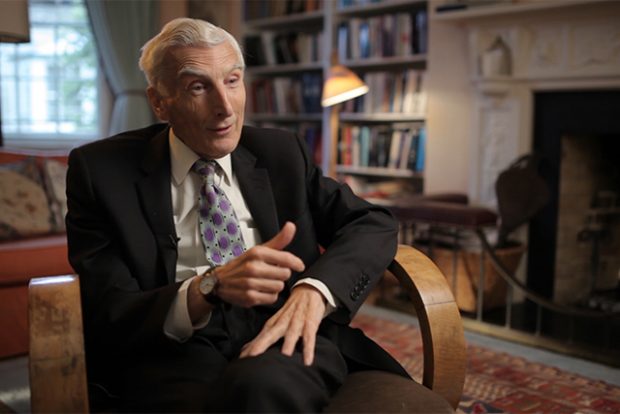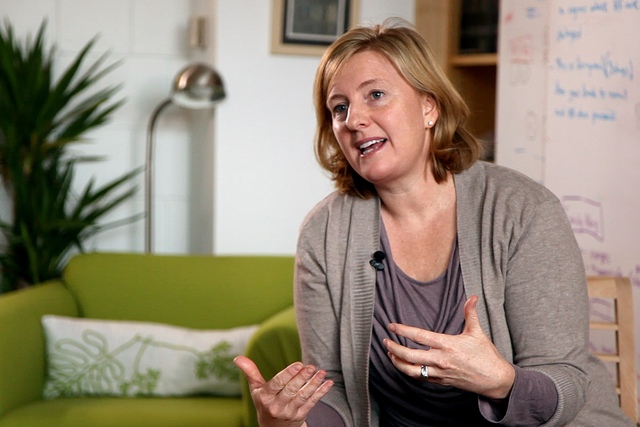Quantizing Gravity
Theoretical physicist Xavier Bekaert on quantum interaction, coupling constant, and properties of gravity
videos | October 9, 2015
How is gravitational interaction different from nuclear and electromagnetic interactions? What is the behavior of gravitons at high and low energies? Are there any possible solutions accounting for quantum gravity? These and other questions are answered by Associate professor of Physics and researcher at the Laboratory of Mathematics and Theoretical Physics at the University of Tours Xavier Bekaert.
By ‘quantizing’ we mean that we want to describe an object not only as a particle, but also as a wave: ‘quantizing’ usually means describing properties of objects as waves. Usually in what we call classical physics we describe objects as particles. For instant, when an object (say, a ball) moves, we describe it as a particle with a center of mass, but if you go to very small objects with very small mass or very low energy, then you should take into account that they are not really like particles: they are more like waves propagating in something that is hard to explain because it’s very abstract. Unfortunately, the problem with quantum physics is that the only way to describe it is really abstract with a lot of equations. But still, let us make a try.

To make it simple, let’s concentrate on strong interaction. The important property of the strong interaction (Gerard ‘t Hooft and Martinus Veltman got the Nobel Prize for explaining this important property) is that when you try to describe these interactions at smaller and smaller distances, higher and higher energies, these fundamental interactions have the fundamental property that gluons are described like if they are free, like they don’t interact anymore. It means that when you try to describe the nuclear forces at extremely high energies, like in these experiments in the big accelerators, the theory becomes very simple: the particles should be described like they don’t interact at all. This is a kind of dream of theoretical physicists. For this theory it works.
But what about gravity? With gravity it’s very different: it has some similarities, but it is very different. The similarity is that if we were able to quantize gravity, it seems that we should describe this fundamental interaction in terms of exchange of particles that we call gravitons: like gluons, they are massless particles that propagate with the speed of light. So there it looks very similar. But an important property of gravity (and it’s completely different from the strong interaction) is related to the coupling constant that describes the strength of the interaction. The coupling constant on the classical level does not depend on the scale, on the energy with which we look at the interaction.
The more technical term is that the coupling constant is related to what we call the Planck mass, and this one is also related to the Newton constant that people learn in high school when they learn about Newton law. This coupling constant has some units, it is not dimensionless. The important consequence of that fact is the following: if you probe gravity at higher and higher energies, it seems that gravitons interact more and more strongly. That’s a nightmare. In fact, their interactions are so strong that they produce infinities in the equations, and you don’t know how to make sense out of it. Strictly speaking, some infinities were appearing also for the strong interaction, but in that case we could cure them: there are some techniques that were working for strong interaction, but they do not work at all for gravity. The good news is that if you go the other way around and look at very low energies, very large distances, then gravity is very weakly interacting. It’s strange to see that gravity is actually the weakest fundamental interaction of them all because it’s the first fundamental interaction that we meet: when we are children and we fall down, essentially, we experience this fundamental interaction.
Trying to quantize gravity would mean trying to go beyond this problem, and various ideas have been suggested to do that. There are many theories that people may have heard of from popular science. The most famous is string theory which has some promising aspects although it has also its own problems. Another one, also relatively popular, is loop quantum gravity. There are also other ideas, and there is even a more conservative option, proposed by Weinberg, which is the so-called ‘asymptotic safety scenario’ essentially admitting that yes, gravity indeed interacts very strongly when you go to high energies, and we should just leave it as it is and try to go ahead. So that’s also a possibility.
Maybe the best thing I can say to conclude is that science is still very open, young people are really very welcome with new ideas: this is the good news about things like trying to quantize gravity.
So if very young people are reading this, there are still big open problems that are waiting for you.






























